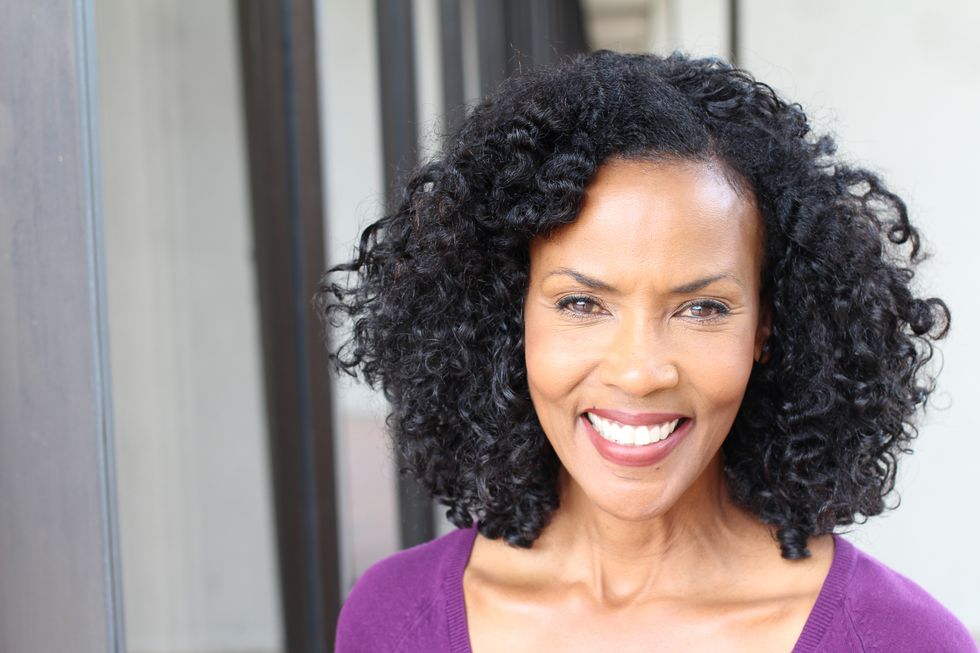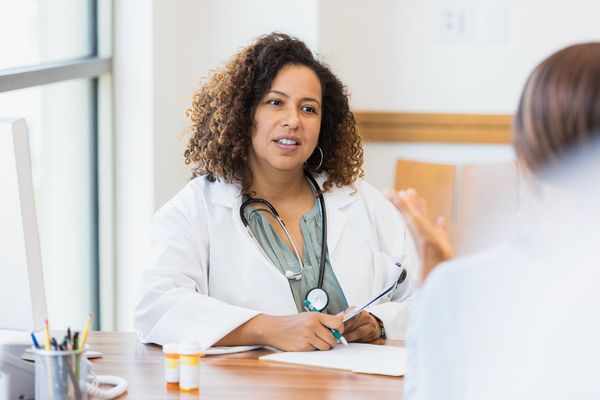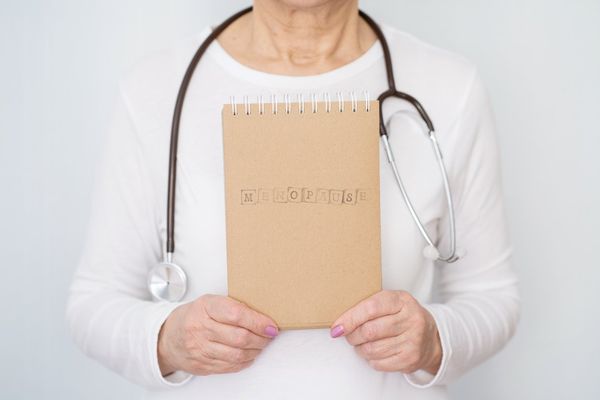Your milestone birthday—the half-century mark—is fast approaching. If you've been paying attention to your health, then this big birthday shouldn't be a big deal.
But don't worry if you've put your health by the wayside at times. We've all slipped up a bit. Still, it's never too late to get on the path to good health. That way you'll avoid health problems later in life and can sail into your 50s with a strong body and mind.
Here are some health choices women should make by age 50.
Consider scheduling breast screenings.
Breast cancer screenings can be confusing and scary. Experts agree that detecting breast cancer early offers a better outlook, but when to start screenings and how often to have them has changed repeatedly. That leads many women in their 40s to just put off the screenings.
The American Cancer Society (ACS) recommends that women ages 45 to 54 get mammograms every year. Women ages 40 to 44 can choose to get mammograms if they wish. However, the United States Preventive Services Task Force recommends that women 50 to 74 who are at average risk for breast cancer get a mammogram every two years. It recommends women should weigh the benefits and risks of screening tests when deciding whether to get mammograms before age 50.
For women with an average risk of developing breast cancer, the American College of Obstetricians and Gynecologists recommends a yearly mammogram starting at age 40. If you haven't started screening in your 40s, you should begin getting screening mammographies no later than age 50 years.
Most groups agree that every woman should get an individualized screening schedule after talking about her personal and family health histories with her health care professional. Women with a parent, sibling or child with breast cancer are candidates to start earlier screenings and to possibly also have an annual breast MRI. It's also important to know whether you have dense breasts and, if so, what type of mammography (such as 3D imaging) is best for you.
2. Get a colonoscopy.
For years, the ACS and other medical groups have advised people with an average risk of colon and rectal cancer to begin screening at age 50. Earlier screening has been reserved for people at increased risk.
However, most people should now begin colorectal cancer screening at age 45, according to guidelines that were spurred by the rising rate of the disease among younger Americans. An ACS study found that since the mid-1990s, colon cancer rates among Americans aged 20 to 54 have been steadily inching up, by between 0.5 percent and 2 percent each year. Someone born in 1990 now has twice the risk of colon cancer and four times the risk of rectal cancer as someone born in 1950, the new report noted. The risks of screening, meanwhile, are low. Those hazards include, rarely, puncturing of the colon wall or significant bleeding. Here is how to prepare for a colonoscopy.
3. Remember birth control.
Yes, fertility does decline with age. But if you don't want to get pregnant and you're sexually active, avoid an unintended pregnancy. You're still at risk for getting pregnant until you reach menopause. If you're not using a birth control method, talk with your gynecologist about the right one for you.
Healthy women over 35 can safely use oral contraception, as long as they don't smoke, have normal blood pressure and have no history of cardiovascular disease. In fact, you can keep using it until age 50. Other estrogen-based birth control options include a vaginal ring, which is inserted into the vagina or a skin patch embedded with hormones.
Progestogen options include injections and hormone-releasing intrauterine devices (IUDs). All use the hormone progestogen for long-term prevention of pregnancy.
Copper IUDs, spermicides, the sponge, diaphragms, cervical caps and condoms provide protection without hormones.
3. Keep on or start exercising.
We all know that exercise yields tons of benefits. It can help stave off or manage chronic disease like diabetes, obesity, osteoporosis and heart disease. Still, a study found that 31 million Americans (28 percent) 50 and older are inactive.
The Department of Health and Human Services recommends that you get at least 150 minutes of moderate aerobic activity (brisk walking, swimming) or 75 minutes of vigorous aerobic activity (running, aerobic dancing) a week, or a combination of both. Muscle mass and strength decreases as we age. To build muscle mass and muscle strength, fit in strength-training exercises at least two times a week for all major muscle groups. Find out ways to stay motivated.
Sitting less is important, too. Sitting too much can be detrimental to your health and longevity, even if you get enough daily physical activity.
Any activity is better than none. Even brief bouts of activity offer benefits. If you can't fit in one 30-minute walk during the day, try a few five-minute walks instead. Make regular physical activity part of your lifestyle.
4. Screen for diabetes.
Experts recommend routine testing for type 2 diabetes if you're age 45 or older. Type 2 diabetes is the most common form of diabetes. If you have type 2 diabetes, your body doesn't use insulin properly. At first, your pancreas makes extra insulin to make up for it. But, over time it's unable to keep up and can't make enough insulin to keep your blood glucose at normal levels.
5. Visit the eye doctor
Beginning in the early to mid-40s, some people may start to have difficulty seeing clearly at close distances, especially when working on the computer or reading. This normal change in the eye's focusing ability will continue to progress over time, says the American Optometric Association. You may need bifocals or multifocal lenses (if you already wear prescription glasses or contact lenses) to help your vision.
Other common age-related vision changes include needing more light to see, problems with glare (such as you see extra glare from headlights at night), less tear production (often true for women undergoing hormone changes) or difficulty distinguishing between certain color shades. An exam at an optometry office can help detect these changes and eye disease, like glaucoma or cataracts.







